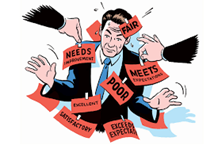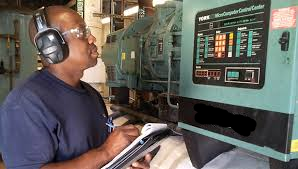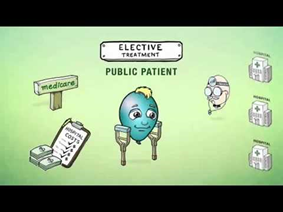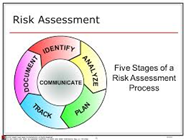Published in the Air Conditioning and Refrigeration Journal by ISHRAE
Introduction
 The current practice is for owners or users hire services providers for operations and maintenance contracts on plant capacity basis with a very general rule of thumb or with marginal increment of rates. While the service provider commits better service, better response time and better complaint management, the client or end user generally feels that there has been under-delivery. The service provider has records of complaint received, attended closure time to prove his performance. While the client feels that he is paying high for the given quality of service, the service provider feels that he are getting paid a pittance and is over-stretching his budgets, and all complaints are getting attended within committed time frame with a few exceptions.
The current practice is for owners or users hire services providers for operations and maintenance contracts on plant capacity basis with a very general rule of thumb or with marginal increment of rates. While the service provider commits better service, better response time and better complaint management, the client or end user generally feels that there has been under-delivery. The service provider has records of complaint received, attended closure time to prove his performance. While the client feels that he is paying high for the given quality of service, the service provider feels that he are getting paid a pittance and is over-stretching his budgets, and all complaints are getting attended within committed time frame with a few exceptions.
If one analyses, the reason why the system always leaves both the parties dissatisfied is that the contract itself measures the time taken to respond and the time taken to resolve. The more the complaint, the lower will be the average time of response. Hence both the owner and the service provider carry on with the dangerous norms of averages within the time frames.
A Typical Scenario
Why do I call it dangerous?
Consider the situation of a 24/7 operation with service level agreement of 99% uptime. Assuming that everything was working fine for the entire year except for 3.5 days (87hours) at a stretch when the entire system was down. Will this incident be seen from the contractual viewpoint or the satisfaction viewpoint? Is the service provider right or is the client’s dissatisfaction justified? Is it dangerous?
 An IT support service norms states that you should have 100% standby for 24/7 operation with 99.9% uptime, 200% standby for 99.9% uptime, and 400% standby for 99.999% uptime (1 hour maximum breakdown/year). All units are kept operating in parallel at a maximum of 20-25% load to meet this uptime guarantee.
An IT support service norms states that you should have 100% standby for 24/7 operation with 99.9% uptime, 200% standby for 99.9% uptime, and 400% standby for 99.999% uptime (1 hour maximum breakdown/year). All units are kept operating in parallel at a maximum of 20-25% load to meet this uptime guarantee.
 The HVAC end user or client would desire similar uptime, but can the designer convince the client to budget that much in the design? Is the client ready for that kind of investment in HVAC plant or products?
The HVAC end user or client would desire similar uptime, but can the designer convince the client to budget that much in the design? Is the client ready for that kind of investment in HVAC plant or products?
Coming back to the issue of why there is so much dissatisfaction in the service provider as well as client, logically if one party is happy and other aggrieved, then it makes at least some sense. But very rarely, if at all, it is observed that a client or end user is happy with what they are receiving against what they are paying or, vice -versa, a service provider is happy receiving what he is receiving for what he is providing.
 The question goes back to how the industry measures its performance or what the client perceives as good service. At a no complaint site, having an O&M contract is perceived by client and his commercial department as a waste of money. “Why not pay for quarterly and save money for the organization? Anyway, there has been no breakdown in the last two years,” quips cost optimization committee.
The question goes back to how the industry measures its performance or what the client perceives as good service. At a no complaint site, having an O&M contract is perceived by client and his commercial department as a waste of money. “Why not pay for quarterly and save money for the organization? Anyway, there has been no breakdown in the last two years,” quips cost optimization committee.
The service provider feels let down after having done a decent job of taking proper preventive measures. And this kind of decisions is a recipe for big time failures, beneficial to none.
Service Level Agreements
 Service contracts are generally restricted to a simple SLA of managing inside design conditions as per the plant operating design conditions. If the plant or chillers are designed to committed to operate at, say, 0.7kw/TR, AHUs are supposed to consume 9kw, etc., the inside design conditions and the energy consumption should be the basis of SLA.
Service contracts are generally restricted to a simple SLA of managing inside design conditions as per the plant operating design conditions. If the plant or chillers are designed to committed to operate at, say, 0.7kw/TR, AHUs are supposed to consume 9kw, etc., the inside design conditions and the energy consumption should be the basis of SLA.
Welding the stick alone does not work. Likewise, only incentives do not work. But, both together become a very powerful tool to motivate the service provider to strive for the bonus. How can a service provider claim the bonus, or how can the end user claim penalty? The answer lies in a proper and calibrated instrumentation and data recording system, commonly known as Building Management System (BMS). However, it needs to be effectively operational.
 The responsibility of claiming the bonus also motivates the service provider to keep the BMS up and in effective condition, sending pop-ups to the end user about deviations from the design both in terms of time period and conditions.
The responsibility of claiming the bonus also motivates the service provider to keep the BMS up and in effective condition, sending pop-ups to the end user about deviations from the design both in terms of time period and conditions.
Implementable SLAs
Deviation of 1oC for 6 hours and deviations of 4oC for 15min are the two categories where the satisfaction levels are to be measured and rationalized based on the criticality and comfort areas.
 Monthly or annual energy consumption is another powerful tool for the client to engage in an actual implementable SLA. Dual meters for measuring energy from electricity board and captive power log the actual consumption and energy and cost savings accrued, which can be shared with the service provider as bonus, subject to inside conditions being maintained.
Monthly or annual energy consumption is another powerful tool for the client to engage in an actual implementable SLA. Dual meters for measuring energy from electricity board and captive power log the actual consumption and energy and cost savings accrued, which can be shared with the service provider as bonus, subject to inside conditions being maintained.
Addressing Design Flaws
 What does the service provider do if the design itself has a flaw? What happens when a space that is designed for specific design parameters is actually operating/occupied in different manner? It is important for the service provider to technically and with calculations show and prove that the design has a flaw, which needs to be rectified. The client needs to see this in right perspective and not create a situation of confrontation between the designer and service provider, else blame game starts and opportunity to improve the situation gets lost. Finally, no one benefits.
What does the service provider do if the design itself has a flaw? What happens when a space that is designed for specific design parameters is actually operating/occupied in different manner? It is important for the service provider to technically and with calculations show and prove that the design has a flaw, which needs to be rectified. The client needs to see this in right perspective and not create a situation of confrontation between the designer and service provider, else blame game starts and opportunity to improve the situation gets lost. Finally, no one benefits.
All this requires techno-commercial experts from the client and the service provider. People who are aware of performance analysis, energy conservation, contractual obligations, commercial implications, cash and balance, etc., can be the right people to lead this.
Energy Saving Opportunities
The opportunities are humongous. Consider only 5% savings in energy in any facility on account of HVAC. For a city like Bangalore, for almost 100 million sqft of office space, with almost 250 million units being consumed only on account of HVAC, and this 5% potential is equivalent to 12.5 million units per month, and a demand reduction of over 15MW. A huge contribution to the nation, the society and the environment is possible by this route, without any investment. It just needs implementable and measureable bonus clause in SLA for the service provider to encourage them to run the system optimally.
 When the system optimally, it also de-stresses the equipment. This itself can enhance the life of the plant, increase the uptime availability of resources and, most importantly, increases the service provider’s profitability. This allows him to appoint better people and invest time in training and improving the skills sets of his manpower, with consequent social benefits.
When the system optimally, it also de-stresses the equipment. This itself can enhance the life of the plant, increase the uptime availability of resources and, most importantly, increases the service provider’s profitability. This allows him to appoint better people and invest time in training and improving the skills sets of his manpower, with consequent social benefits.
There is a great deal the owner and the Service provider can benefit with performance contracting.
Published in the Air Conditioning and Refrigeration Journal by ISHRAE
Performance Based O&M
In Part 1 of this article, we discussed the prevalent O&M contracts, satisfaction delivered and received, and challenges faced by facility managers and service providers to achieve satisfaction. We also discussed the opportunities in SLA-based contracts and bonuses in-built in such contracts, and benefits of performance based contracts for the user, service provider and society at large.
How to make it happen? This question is very crucial and controversial in contracts with SLAs.
The client facility should have feeder and metering for various utilities separately. Log data of the same on daily and monthly basis should be available. Finally, the ratio of the EB electricity bill and utility consumption should be noted. The end user ultimately should be able to reduce the energy bill and expense. Only then it benefits the user. Whatever action the service provider takes should reflect in the energy bill of both the EB as well as back-up power (diesel) consumption.
 Hence if HVAC consumes 60% of the facility’s energy, 5% reduction in HVAC energy should result in 3% reduction in the overall energy bill. This is the actual saving and reduction in bill and not in internal metering.
Hence if HVAC consumes 60% of the facility’s energy, 5% reduction in HVAC energy should result in 3% reduction in the overall energy bill. This is the actual saving and reduction in bill and not in internal metering.
Remember this saving is also two pronged: reduction in demand charges as well as energy charges. Facilities that have higher DG usage and consumption benefit much more sometimes, as the reduction in energy may result in eliminating the need to use one DG running on part load and increasing the overall loading on rest of the DGs, which reduces the DG specific consumption, thereby giving the energy efficiency in DG as an additional bonus.
This agreement or contract becomes easier to implement if the user has good previous energy consumption data and split up.
The methodology that can be followed is:
- Use last one year’s logged energy split up and energy bill data of diesel consumption and EB
- Use the same period’s logged in data of split up of HVAC, lighting, essential (UPS) and non-essential (raw power DB) loads. Sometimes lighting data split up is not available as the same is taken from the floor feeder. However, it is important to have an authentic log of split up in as much detail as possible.
- Data on operating hours of usage of the facility as well as various components of plants, if available, are helpful in preparing a better documented agreement. For example assume that, of the ten floors of a facility, two floors operate 24/5 or 24/7 while others operate 12 hours per day. The critical loads anyway operate 24/7 and are 6% of the facility area.
- The above information when captured gives a baseline for any performance oriented contract. These would be the facts that no one can deny. Records would be available, operation times and periods would be recorded, hence the baseline can be prepared.
- Baseline preparation can be simplified by having kWhr/per sqft x hours of usage, or on workstation hours of The latter will complicate the contract with disputes regarding occupied workstations, un-occupied workstations, un-occupied within operating hours while only 10% workstations are operating beyond certain times.
 Hence to keep it simple and within defined tolerance limits, the sqft hours of usage can be used for starting honest, applicable, less disputable benchmarks and baselines.
Hence to keep it simple and within defined tolerance limits, the sqft hours of usage can be used for starting honest, applicable, less disputable benchmarks and baselines.- If 2,000 sqft operates 24 hrs and another 12,000 sqft operates 12 hours only on weekdays, while another 1,500 sqft operates 24/7, the total sqft-hr operation is:
2,000 x 24 x 5 + 12,000 x 12 x 5 + 1,500 x 24 x 7 = 12,12,000 sqft-hr of usage, rather than 15,500 sqft of usage, with 75% operating only 12 hours and the rest operating 24 hours in which 50-60% operates only on weekdays. Here, though the exact working may not be very accurate, it would be with minimum dispute. Thereby this idea has a chance to bring in the necessary change.
Once the contract is signed and operations are on, data and information collected can bring in better information from the site both for the service provider as well as the end user, to refine the contract, continuously increasing the accuracy, making it acceptable to both the parties and mutually beneficial.
Remember that these contracts need to be operated on the simple principle of collecting greater benefits from where one is, rather than counting on what one is giving, as long as they do not give more than what they are already giving, but with better performance on comfort as well as uptime. - How much to give, and on what basis? Again, to simplify the contract and minimize disputes as well as to encourage the perform
 ing team, the focus can be on uptime and energy consumption. Hence if a client is spending Rs. 200/TR/month on O&M and Rs. 0.05 per sqft-hr on energy, the net expense for the end user is Rs. 12,16,000 for 1,00,000 sqft of the building, which operates with 500TR installed capacity of AC plant and of which 75,000 sqft operates for 12 hours for 5 days a week, 20,000 sqft operates for 24 hrs but 5 days a week, and 5,000sq ft operates for 24 hours 7 days a week.
ing team, the focus can be on uptime and energy consumption. Hence if a client is spending Rs. 200/TR/month on O&M and Rs. 0.05 per sqft-hr on energy, the net expense for the end user is Rs. 12,16,000 for 1,00,000 sqft of the building, which operates with 500TR installed capacity of AC plant and of which 75,000 sqft operates for 12 hours for 5 days a week, 20,000 sqft operates for 24 hrs but 5 days a week, and 5,000sq ft operates for 24 hours 7 days a week.
Hence the estimation is 200 x 500 = Rs 1,00,000 for plant O&M.
75,000 x 12 x 5 + 2,000 x 24 x 5 + 5,000 x 24 x 7) x 4 weeks/month x Rs. 0.05 = Rs. 11,16,000.
For the sake of simplicity, the actual usage considered here is 20 days a month.
The value of Rs.0.05 per sqft-hr will have to be derived for every site separately to arrive at the contractual sqft-hr for every building and site, and this value used to divide the net energy cost month on month, including DG energy cost as well as EB energy cost including the maximum demand.
Hence the net out flow is Rs. 12,16,000 per month. - Now if the service provider has been contracted with the clause of uptime as well as minimum 3% energy reduction, he is bound to reduce the energy cost by Rs 33,480 per month.
- The client can expect a net outflow of Rs. 11,82,520 without loss in comfort, nor loss in uptime.
Scenario I
 If the service provider has been able to reduce the energy consumption by Rs. 50,000, the management should not hesitate to share Rs. 16,520 from that with the vendor. In fact, to encourage that, the management should include in the contract that for 3% to 7.5% reduction in energy bills, the management would share 50% of savings with the service provider, subject to no decrease in satisfaction levels and uptime availability.
If the service provider has been able to reduce the energy consumption by Rs. 50,000, the management should not hesitate to share Rs. 16,520 from that with the vendor. In fact, to encourage that, the management should include in the contract that for 3% to 7.5% reduction in energy bills, the management would share 50% of savings with the service provider, subject to no decrease in satisfaction levels and uptime availability.
This encourages the service provider to keep the plant in excellent condition and operate it at its peak operational efficiency levels. Once the plant is serviced properly, preventive maintenance is done sincerely and timely, break downs automatically get minimized or eliminated. Since the plants and their operations are checked regularly, preventive maintenance becomes effective and the life of the equipment improves. The service provider benefits by reducing his breakdown/repair costs. The client benefits by better uptime and lower energy costs. Over and above the regular fees, the service provider gets the saving bonus. Consider a case where regular attention to the equipment and its observation give the service provider an idea for enhancing energy conservation. This may require some investment. Now most of the clients are in leased premises with equipment owned by developers. The developer does not benefit from investing his capital with no increase in revenue, since lease agreements are for a fixed period with defined charges. Energy bills are the end user’s responsibility. Most of the developers do not even charge any mark up in the energy bills and pass on the same to the user on cost basis, other than common area maintenance charges. The user cannot make investments since he does not own the equipment, and contractual lease periods are 3-5 years only. Any investment with payback period beyond two years gets rejected by the management, because the approval procedure for a capital item itself would take a year, and ordering and installation on working sites would take 5-6 months, ensuring that payback starts after the lease expires.
Consider a case where regular attention to the equipment and its observation give the service provider an idea for enhancing energy conservation. This may require some investment. Now most of the clients are in leased premises with equipment owned by developers. The developer does not benefit from investing his capital with no increase in revenue, since lease agreements are for a fixed period with defined charges. Energy bills are the end user’s responsibility. Most of the developers do not even charge any mark up in the energy bills and pass on the same to the user on cost basis, other than common area maintenance charges. The user cannot make investments since he does not own the equipment, and contractual lease periods are 3-5 years only. Any investment with payback period beyond two years gets rejected by the management, because the approval procedure for a capital item itself would take a year, and ordering and installation on working sites would take 5-6 months, ensuring that payback starts after the lease expires.
Thus it is prudent to include in the contract a bonus clause for the service provider that, in case there is saving beyond 7.5%, the user shall pay the service provider the entire amount saved over 7.5%. We will explain the logic for this later in the article.
Scenario II
For the above example of 1,00,000 sqft facility:
Minimum energy bill saving target in SLA with service provider is 3%, else Rs. 33,480 will be deducted from his bill of Rs 100,000 per month.
If saving is between 3% and 7.5%, Rs. 83,700 – Rs. 33,480 = 50,220 (Rs. 33,480 is part of 3% saving).
Minimum energy bill saving target in SLA with service provider is 3%, else Rs. 33,480 will be deducted from his bill of Rs 100,000 per month.
If saving is between 3% and 7.5%, Rs. 83,700 – Rs. 33,480 = 50,220 (Rs. 33,480 is part of 3% saving).
Scenario III
Assuming that the service provider is able to conserve 10% of the energy consumption:
Energy cost saving = Rs. 1,11,600 per month.
Amount saved by the end user = Rs.58,590.
Extra amount generated by the service provider = Rs. 1,11,600 less Rs 58,590 = Rs.53,010.
Now, the question is, why should the user pass on the entire benefit to the service provider over and above the 7.5% saving?
From the experience of the author, it would be very difficult for the service provider to save anything beyond 7.5% without incurring extra cost, extra effort and sometimes capital investment. Hence, it would enable him recover all that within a framework of 1 year, and then recover the investment, interest on investment (professional man-hours and money), so that he can make a profit over this amount. It would make it viable for the service provider and encourage him to undertake this exercise. The user, anyway, is saving almost 4.8% expense without any investment, but with a smart implementable and simple performance based contract.
Let us go back to the beginning.
 The user has a traditional service contract for O&M. He is not satisfied with the level of service received and any kind of carrot and stick is not bringing about any improvement. The service provider is not happy with what he gets, and expects better rates from the user. The user says he is ready to consider better rates next year provided there is improvement in service for one year.
The user has a traditional service contract for O&M. He is not satisfied with the level of service received and any kind of carrot and stick is not bringing about any improvement. The service provider is not happy with what he gets, and expects better rates from the user. The user says he is ready to consider better rates next year provided there is improvement in service for one year.
The service provider is wary of such promises; the user is also wary of the service provider’s commitment to improve the service and response time. Penalty clauses in the contract are serving no purpose, as higher penalty does not benefit the facility and the user, while there is a possibility of the service provider refusing to continue with the service.
In an incentivized performance based SLA contract, what happens is:
 The uptime improves. The service provider is now proactive in giving invaluable suggestions for improvement. Preventive maintenance is actually being done and not only routine servicing. Records are being maintained. Uptimes are tracked in an organized manner.
The uptime improves. The service provider is now proactive in giving invaluable suggestions for improvement. Preventive maintenance is actually being done and not only routine servicing. Records are being maintained. Uptimes are tracked in an organized manner.
Was it the main requirement? Have the satisfaction levels improved? Have end user complaints reduced? Is the motive behind a performance level contract being achieved?
Hence there is a marked improvement from the previous monthly outflow with poor satisfaction levels, poor response and unsatisfactory answers.
Over and above this, the client is getting potentially 4.8% saving.
Is it greed that prevents the user from sharing the saving that the service provider is getting from his efforts and his investment of time and money? Or is it lack of courage to put up such a proposal to the management? Or is it just that everyone is waiting for some else to bell the cat?
Published in the Air Conditioning and Refrigeration Journal by ISHRAE
The O&M Business
 In Part 2 of this article, we discussed the benefits of performance-based contracts for users, service providers, and a sample formula to make this happen practically. In Part 3, we will now see what prevents the O&M industry from achieving SLA based contracts.
In Part 2 of this article, we discussed the benefits of performance-based contracts for users, service providers, and a sample formula to make this happen practically. In Part 3, we will now see what prevents the O&M industry from achieving SLA based contracts.
O&M services are provided by service providers and OEMs. OEMs also, in turn, engage the services of service providers who have spent considerable time and derived satisfaction and pride from resolving issues and complaints of end users. Every now and then these service providers start their own business. The difference between working as a service provider under an organization and working on one’s own is crucial.
 From the outside, it appears that the service provider is making a lot of profit, since:
From the outside, it appears that the service provider is making a lot of profit, since:
- The cost of service mainly comprises labour and manpower, which is cheap in India, especially if you hire
- The cost of an office is minimal, as your residence can double as the registered office.
- Conveyance charges are limited to monthly petrol bills.
Looks simple, but is it?
To understand the O&M business, one has to understand that this business is really like a hospital business combined with an insurance business. It requires the capability to provide the best diagnosis, suggest the remedy and treatment in the fastest time possible, backed with an insurance provider who provides relief to the patient to cover the cost of service. This assures the hospital that the expenses would be covered by the insurance company, so they can deliver the critical services without bothering about the cost.
 Both these businesses are viable only for big players and big capital market owners. Why small players are not able to provide an insurance back up? Where does the money come from? What is the amount collected and disbursed every term? How are premiums decided?
Both these businesses are viable only for big players and big capital market owners. Why small players are not able to provide an insurance back up? Where does the money come from? What is the amount collected and disbursed every term? How are premiums decided?
In HVAC services, the service provider is the doctor and hospital as well as the insurance provider. The annual service charges are akin to the premium. The cost of equipment in question is much higher than the service charges collected.
A service receiver or provider or OEM rarely estimates the risk involved, risk covered, and the maintenance contract amount to be charged. Service providers are not equipped to estimate the financial risks. Nor can the clients estimate the risk involved in the downtime of the HVAC system before negotiating the charges. The  stakeholders generally do not understand that there is risk coverage of the business that is being served by the HVAC system and that they are playing a small part in a much bigger picture.
stakeholders generally do not understand that there is risk coverage of the business that is being served by the HVAC system and that they are playing a small part in a much bigger picture.
Today’s O&M business is being run just in terms of man, machine and money. Unfortunately, the client or end user, especially the purchase and finance departments, while expecting the moon in terms of service, are happy in the comfort levels of the earth and do not want to change the status quo.
The Businessmen
 Another issue faced today is the service providers themselves. They start the business thinking that it is run based on the quality of work and relationship. However, they cannot be more wrong. Business is run on money, by money and for money. That is the apparent truth. But, in reality, today’s business is run on the money of the service provider, by the quality and pressure of relationship of the client and for taxes and penalties to the government.
Another issue faced today is the service providers themselves. They start the business thinking that it is run based on the quality of work and relationship. However, they cannot be more wrong. Business is run on money, by money and for money. That is the apparent truth. But, in reality, today’s business is run on the money of the service provider, by the quality and pressure of relationship of the client and for taxes and penalties to the government.
How many service providers understand the value and meaning of working capital? What is the cost of money? What are the taxes? When are they due?  When do they have to file returns? What is the cost of filing returns? What is penalty for late filing? How much is the financial cost every year on late charges and penalties?
When do they have to file returns? What is the cost of filing returns? What is penalty for late filing? How much is the financial cost every year on late charges and penalties?
The chartered accountant or the auditor asks them to pay some amount as penalty, and they pay. The logic of paying penalties is that the government interest charges and penalties are lower than the interest rates at which the service provider gets the loan from pawnbrokers in the local market, often against family jewelry as mortgage. Sometimes the service provider, in order to minimize his taxes, asks the auditors to reduce his profits in the books. This helps him reduce his taxes, but also makes his account books look bad, and hence no bank risks giving him loans.
One such service provider had a regular turnover of over Rs.1.5 crore, but had a profit of only Rs.2.5 lakh per annum. He failed to raise a Rs.25 lakh loan from banks at 15% reducing balance, and was forced to take the loan from a pawnbroker against family jewellery at 48% interest (Rs.40 per thousand per month as the rate goes). Now, he cannot even convert the loan, as Rs.12 lakh of interest has to be paid every year without any reduction in the principal amount. Would it not have been prudent to honestly show the 10-12% profit that one should be getting, and pay 33% tax, which would have amounted to Rs.5 lakhs, and get the loan at 15% reducing balance for a 5 year tenure with an EMI of Rs.45,000 per month and clear off the loan in five years?
Many such service providers have tried to run businesses, taken loans to provide services, and then wound up in severe losses and debts. The situation is not very different from a farmer’s plight when he borrows money from a loan shark.
Technical Knowledge
Very few service providers invest in knowledge and learning after they start their career as an entrepreneur. Very few invest in the skills and knowledge of their trainees or apprentices, fearing that once their competence is upgraded, they would leave for better prospects. The service provider community has been losing competence and thereby the pride in their profession.
 Rarely is there a succession plan in place. Who can they trust? Hence, there is hardly any knowledge sharing. People struggle to even collect relevant data to evaluate plant performance, leave alone carrying out a root cause analysis. It is convenient to blame water quality, power quality or the increase in load and resets and restarts. After a couple of years of not solving any problems on the site, the service provider jacks up the service rate with the intention to exit and someone else takes the bait without understanding the trap he is getting into.
Rarely is there a succession plan in place. Who can they trust? Hence, there is hardly any knowledge sharing. People struggle to even collect relevant data to evaluate plant performance, leave alone carrying out a root cause analysis. It is convenient to blame water quality, power quality or the increase in load and resets and restarts. After a couple of years of not solving any problems on the site, the service provider jacks up the service rate with the intention to exit and someone else takes the bait without understanding the trap he is getting into.
 Earlier, this used to happen with packaged and split AC servicing and contracts, but now is becoming common even in large central plants of the magnitude of 8,000 TR. Plants running without capacity control, AHUs running on control valves in bypass modes, VFDs not functioning, sensors giving wrong readings, etc., are commonplace.
Earlier, this used to happen with packaged and split AC servicing and contracts, but now is becoming common even in large central plants of the magnitude of 8,000 TR. Plants running without capacity control, AHUs running on control valves in bypass modes, VFDs not functioning, sensors giving wrong readings, etc., are commonplace.
Service Level Agreements
While booking a sales order, the sales department commits to seven days for replacement of a large centrifugal or screw compressor, and 4 hours for minor complaints. The complaints are hardly ever resolved within such times, with the exception of simple actuator bypass or valve throttling or damper opening (temporary solutions, which become permanent).
 While the end user wants to incorporate clauses of uptime, energy, complaints, etc., does he understand the implications of the clauses? Is the service provider capable enough to understand the clauses? Or the risks involved in terms of monetary commitment to fulfill the obligations of the SLA? Does the end user evaluate this capability while selecting the service provider?
While the end user wants to incorporate clauses of uptime, energy, complaints, etc., does he understand the implications of the clauses? Is the service provider capable enough to understand the clauses? Or the risks involved in terms of monetary commitment to fulfill the obligations of the SLA? Does the end user evaluate this capability while selecting the service provider?
Generally, the end user splits the operations, which are contracted to one common building service provider, and maintenance that is awarded to another specialist service provider. The common building service provider normally employs electricians to keep the building operating and, in rare cases, employs HVAC&R specialists. Even when he employs
Specialist technicians, he limits himself to calling the service provider when he faces a problem, rather than adding value by finding out the issues and creating history documents for the specialist service provider to carry out a root cause analysis and get a permanent resolution.
Data logging is not accurate as the operations team often writes data sitting at the plant room table instead of visiting the location. Often, the instruments do not work (especially the temperature and pressure gauges), yet the logbook is filled. With all this, the SLA is of no value.
The SLA does not go through the external auditor of the service provider to demand a contingency fund for meeting the risks. The service provider is not aware that this is important, or that such risks exist. Perhaps they are blissfully unaware and sign off with the intention of providing services for 2-3 years and then walking out.
The Solution
The two main stakeholders are the client and the service provider. Both have a role and responsibility in the success of the business.
Client

- The end user or the client has to be conscious of the value of the service
- The value should be understood based on the risks associated with the business or dependency of the business on the proper functioning and operation of the HVAC
- The preparedness of having standby systems, relevant spares, technically sound operations team and technically sound technicians, since they are the ones who would attend and solve the issues.
- Based on this, the cost of service and risks must be evaluated, and not blindly on the cost per TR irrespective of age, usage, risks involved etc.
- If some replacement or rectification is suggested, it should be budgeted and At one site, even the chilled water pipe leakage was n
 ot taken seriously, since pipes were buried and hence the problem was also assumed to be buried.
ot taken seriously, since pipes were buried and hence the problem was also assumed to be buried. - Be serious about energy conservation and push for energy reduction, including sharing the savings and giving incentives; it would help the plant to run efficiently and thereby reduce the wear and tear, leading to lower
- Invest in proper temperature and RH recorders and improve the objectivity of the SLA in terms of maintaining a set
value.
Service Provider

- Learn the finance of the Honest businessmen certainly need to understand it. Dishonest ones will anyway know how to manage.
- Learn and understand the law and adhere to Pay your taxes in time and plan properly.
- Invest in upgrading technical knowledge and adapt to the latest technolo One service provider does not believe in readings taken from thermal imagers and infrared sensors, and relies on pipe surface temperature measured with his old mercury thermometer.
- Train the team to create value in your organization by taking care of issues, even without your presence. Even the best of service providers needs family time.
- Understand the commercial and liability clauses mentioned in the works
- Take pride in your team’s achievements and dissemination of
- Being extra conservative can only restrict
- Employ an accountant and carefully follow the incomes and expenses.
Drawing up the SLA
Once both the parties are serious, the service level agreement can be written down objectively and followed. Penalties and incentives can then be discussed and agreed upon with the commitment of meeting the goals and achieving more.
- Performance parameters should be clearly
- Constraints, if any, should be resolved and removed, rather than introduced as escape routes in the
- Invest in good quality instruments and calibrate them regularly. These are the backbone of a service
- Have a proper finance plan to meet the contingency or any investment to commit higher performance
- Do not take orders at low costs, assuming you will get more Remember more orders will come, if at all, at the same or lower costs only and further increase the loss and financial commitments.
- Remember the energy cost of an efficiently run 1,000 TR plant is Rs.2.5 crores annually as compared to O&M cost of only Rs.25 lakh. A 3% saving in energy amounts to Rs.7.5 lakh, being 30% of the contract value.
Conclusion
 There are so many inefficient plants operating all over the country. All it takes is commitment to conserve energy, knowledge of how to conserve energy, instruments to measure, evaluate and monitor the performance, ability to take risks, and command over the technical and commercial matters to push through a contract, and finally the zeal to earn the incentive.
There are so many inefficient plants operating all over the country. All it takes is commitment to conserve energy, knowledge of how to conserve energy, instruments to measure, evaluate and monitor the performance, ability to take risks, and command over the technical and commercial matters to push through a contract, and finally the zeal to earn the incentive.
